This is a false color image of a mosaic of Mercury.
Click on image for full size
Courtesy of NASA.
Evolution of Mercury
Mercury, like the other planets, is believed to have formed in the
earliest stage of the
evolution of the solar
system
as dust came together to form even larger clumps and eventually
small planets or "planetesimals". Eventually, the largest clump's pull of gravity "swept up" the remaining smaller
clumps, producing craters on the young planet's surface.
Because Mercury is so close to the Sun, many of the lightest elements
in the original solar dust cloud were probably not plentiful in the
innermost solar system. As a result, the material left to form the
planet was rich in metals and other elements and minerals that
are solids at high temperature. Under the influence of gravity, the
planet continued to shrink, eventually melting much of the planet
and allowing separation of materials by their density. Sinking of
the heaviest elements to the center of the planet led to the
formation of an iron-rich molten core. Movement of this molten
metal in Mercury's interior is probably responsible for the magentic
field
Mariner 10 measured at
Mercury. The planet cooled quickly, because of its small size, and
it probably has a thick rocky layer or "lithosphere" extending hundreds
of
km into the planet from the surface - possibly even to the core. As
the
planet continued to cool, it shrunk slightly, causing compression of
the
surface and eventually thrust faults, where one portion of rock slips
up
to partially cover another. These thrust faults are probably
responsible
for the formation of
wrinkled ridges which were
observed by Mariner 10.
You might also be interested in:

How did life evolve on Earth? The answer to this question can help us understand our past and prepare for our future. Although evolution provides credible and reliable answers, polls show that many people turn away from science, seeking other explanations with which they are more comfortable.
...more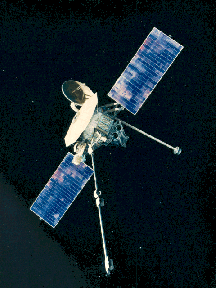
The Mariner 10 mission (USA) to Mercury was launched on November 3, 1973 and arrived at Mercury on March 29, 1974. The spacecraft made three separate passes by the planet, and obtained about 10,000 images
...more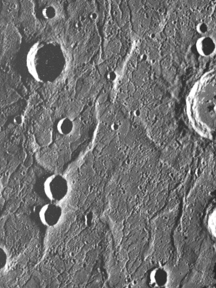
Wrinkle ridges on the surface of Mercury are thought to have been caused by the shrinking of the surface following the cooling and shrinking of the core of the planet. As the core cooled and shrank, the
...more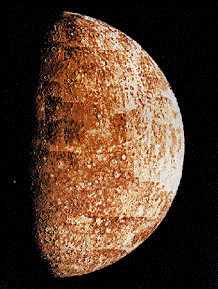
Mercury, the innermost planet of the solar system, is a little bigger than the Earth's Moon. The surface of the planet is covered with craters, like the Moon, but temperatures there can reach over 80
...more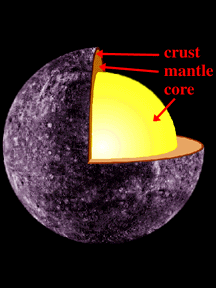
Mercury has a radius of 2439 km (1524 mi), and the metallic iron-nickel core is believed to make up about 75% of this distance. Measurements of the planet's magnetic field made by Mariner 10 as it flew
...more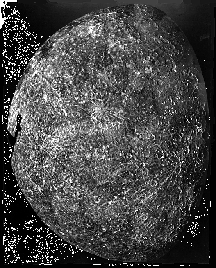
The surface of Mercury has numerous interesting features, including a variety of craters, ridges, and terrains ranging from heavily cratered to nearly crater free. These features, and their location across
...more
Mercury, like the other planets, is believed to have formed in the earliest stage of the evolution of the solar system as dust came together to form even larger clumps and eventually small planets or
...more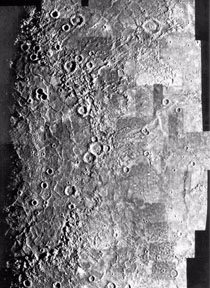
The Caloris Basin is the largest feature on the surface of Mercury. This crater was formed by the impact of a large meteorite in the early formation of the solar system. We only know what half of the
...more













